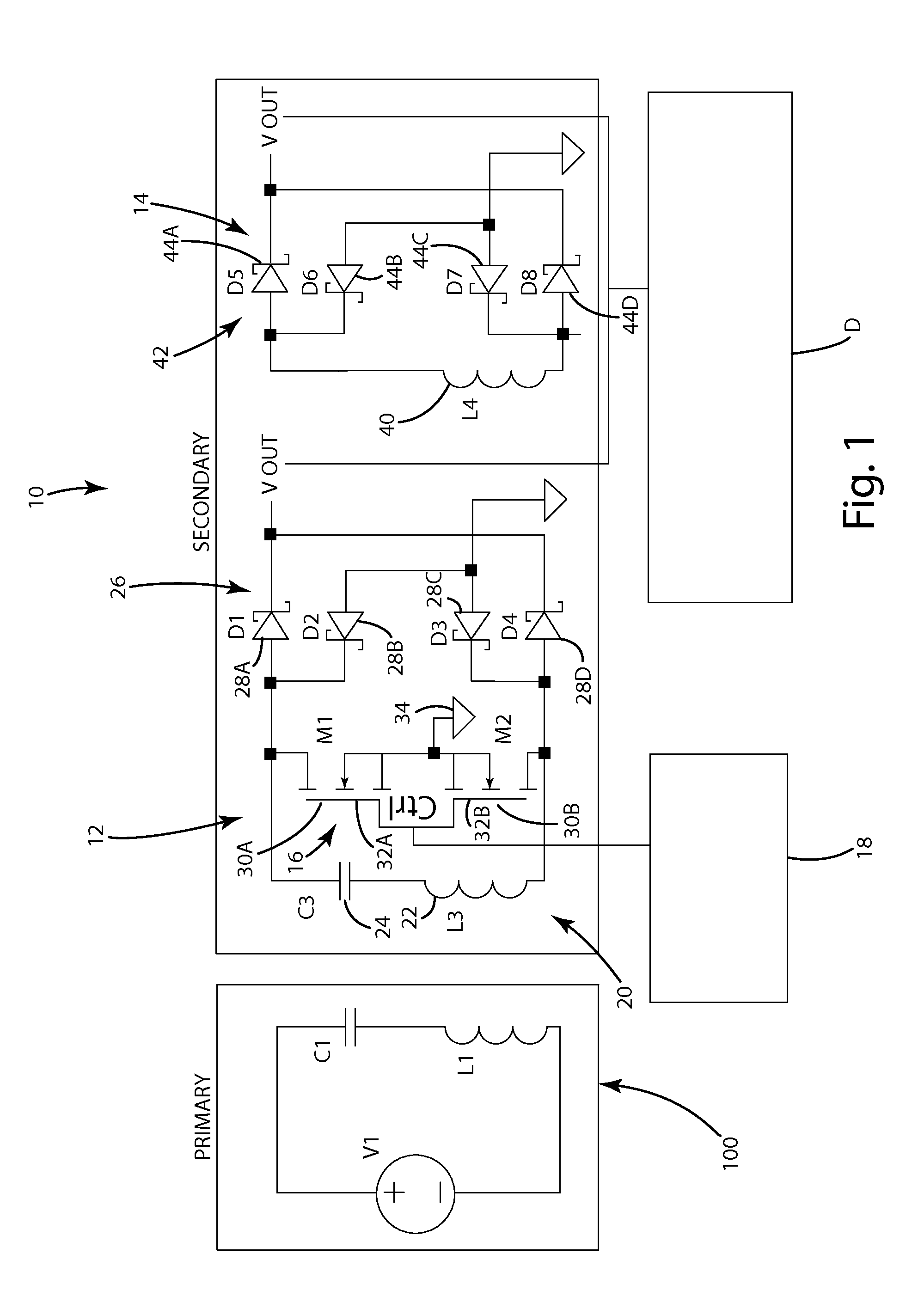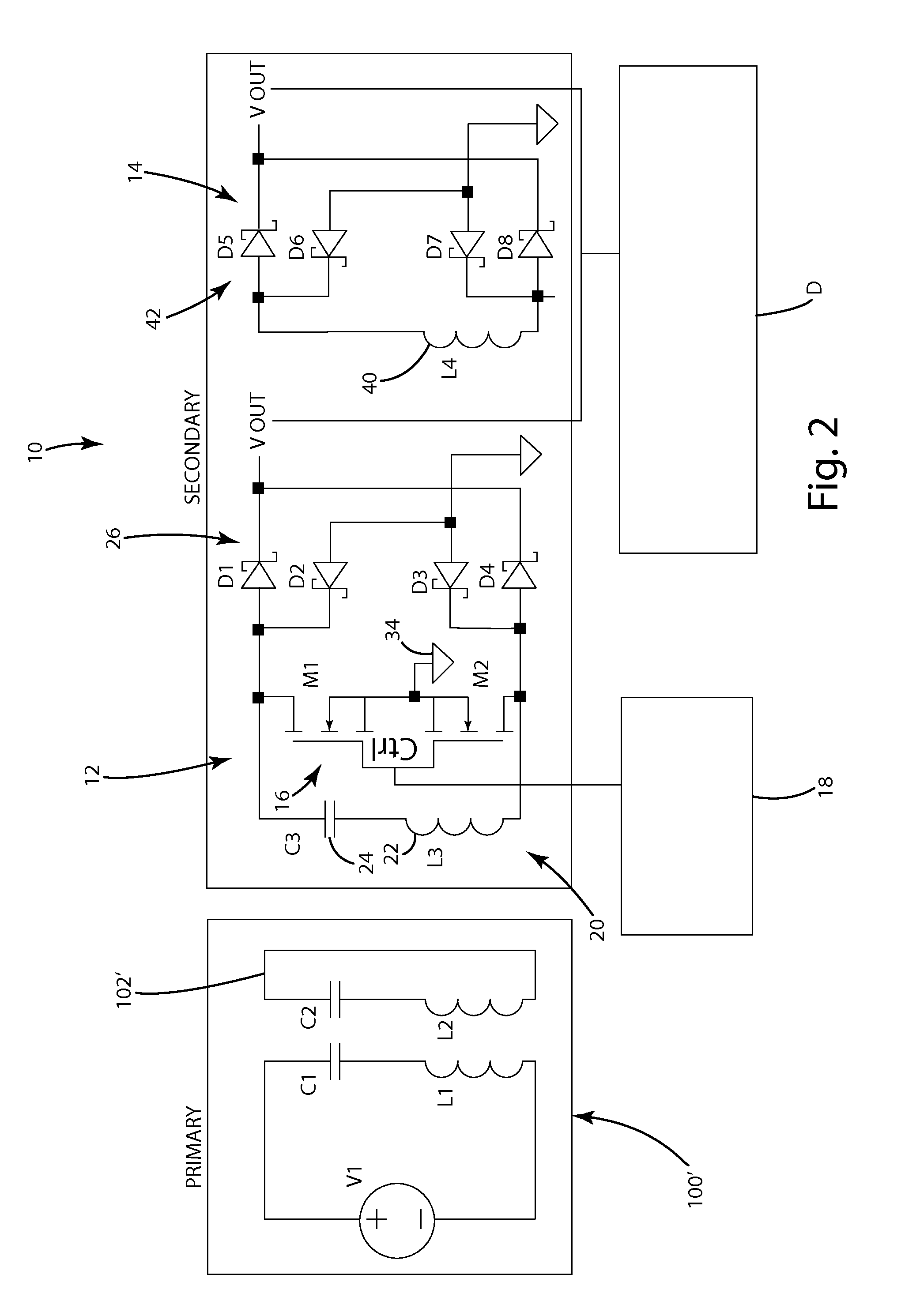Wireless power receiver system
a wireless power receiver and receiver technology, applied in the direction of transformers, inductances, transportation and packaging, etc., can solve the problems of reducing efficiency of resonators, limiting the use of mid-range systems that incorporate resonators, and wireless power supplies with resonators that typically do not operate efficiently with remote devices, etc., to achieve simple and effective wireless power receivers, improve efficiency, and facilitate incorporation
- Summary
- Abstract
- Description
- Claims
- Application Information
AI Technical Summary
Benefits of technology
Problems solved by technology
Method used
Image
Examples
Embodiment Construction
[0023]A wireless power receiver in accordance with an embodiment of the present invention is shown in FIGS. 1 and 2. The wireless power receiver 10 of this embodiment is configured to wirelessly receive power from a close-coupled wireless power supply 100 (see FIG. 1) or from a mid-range wireless power supply 100′ (see FIG. 2). The wireless power receiver 10 is coupled to a remote device D so that it can supply the wirelessly-received power to the remote device D. The wireless power receiver 10 is capable of selectively being reconfigured to operate in close-coupled mode or in mid-range mode to allow it to efficiently receive power from different types of wireless power supplies 100, 100′. The wireless power receiver 10 of this embodiment generally includes a principle receiver circuit 12, a supplemental receiver circuit 14 and a controller 18 for controlling operation of the wireless power receiver 10. In this embodiment, the principle receiver circuit 12 and the supplemental recei...
PUM
 Login to View More
Login to View More Abstract
Description
Claims
Application Information
 Login to View More
Login to View More - R&D
- Intellectual Property
- Life Sciences
- Materials
- Tech Scout
- Unparalleled Data Quality
- Higher Quality Content
- 60% Fewer Hallucinations
Browse by: Latest US Patents, China's latest patents, Technical Efficacy Thesaurus, Application Domain, Technology Topic, Popular Technical Reports.
© 2025 PatSnap. All rights reserved.Legal|Privacy policy|Modern Slavery Act Transparency Statement|Sitemap|About US| Contact US: help@patsnap.com



